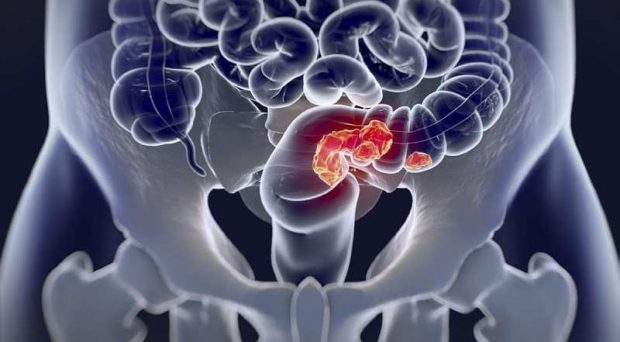
Colorectal cancer, often called bowel cancer, is the third most common cancer and the fourth leading cause of cancer-related death. Fortunately, many screening programmes have now been set up to detect the presence of cancer in people who don’t have any symptoms of bowel disease. These programmes lead to early detection of cancer and its precursors, which improves outcomes.
However, most cancers are not detected through screening programmes, but when a person with symptoms seeks medical advice. The symptoms of serious bowel disease include bleeding from the bottom and/or blood in the faeces; a change in bowel habit lasting three weeks or more; unexplained weight loss, anaemia, or extreme tiredness for no obvious reason; a pain or lump in the abdomen and bloating.
Although most people with these symptoms do not have serious disease, they are very common problems in primary care. Generally, people with symptoms are referred to secondary care for endoscopy in which a colonoscope is inserted through the bottom. Images of the bowel are relayed to a screen and any problems can be detected.
However, the current colonoscopy resource in many countries is inadequate. A particular problem is that the number of patients with symptoms being referred from primary care is increasing rapidly, in large part due to local, regional and national campaigns raising awareness of the need to get bowel symptoms investigated.
Thus, it would be advantageous to have guidelines to help primary care decide which patients would benefit most from referral to secondary care for further investigation.
Controversy in guidelines
FIT detect very small amounts of blood and can pick up more cancers and detect more polyps, which might develop into cancer.
The National Institute for Health and Care Excellence (NICE) updated 2011 guidance (CG27) on referral in 2015 and published NG12 – Suspected cancer: recognition and referral. This guideline covers identification of people with symptoms that could be caused by cancer. It outlines appropriate investigations in primary care and selection of people to refer for a specialist opinion.
In contrast to the 2011 CG27 guidance, testing for occult blood in faeces was recommended in NG12 in several clinical situations which implied a low risk of cancer. It seemed that the traditional guaiac-based faecal occult blood tests were being recommended.
However this test, which has many disadvantages, was never previously recommended for use in patients with symptoms and is considered obsolete for screening. It has also ceased to be available in many laboratories and other healthcare settings. Much heated controversy ensued.
It was firmly pointed out that faecal immunochemical tests for haemoglobin, generally called FIT, are far better tests. FIT detect very small amounts of blood and can pick up more cancers and detect more polyps, which might develop into cancer.
In favour of FIT
Due to the questioning of the NG12 recommendations on faecal tests, NICE set up a group to assess the evidence for the use of FIT in assessment of patients with low-risk symptoms.
NICE also commissioned a group from Kleijnen Systematic Reviews Ltd, York, UK, led by Dr Marie A Westwood, funded by NIHR, to conduct a systematic review of the work done on this topic, and Professor Callum G Fraser, University of Dundee, was asked to provide expertise during the generation of the systematic review, published today in BMC Medicine.
This is an excellent example of translation of research into clinical practice.
The review concluded that there was evidence to suggest that triage using FIT at a low cut-off around 10 μg Hb/g faeces has the potential to correctly rule-out bowel cancer and avoid colonoscopy in 75 to 80% of symptomatic patients. Importantly, secondary care referral following a positive FIT may facilitate the identification of other significant bowel pathology in patients who are found not to have lower gastrointestinal tract cancer, mainly inflammatory bowel disease.
The important question is – has this systematic review actually affected clinical strategies? The answer is clearly a resounding “yes”.
In July 2017, the recommendation in NG12 on testing for occult blood in faeces was stood down since it had been superseded by newly-published NICE diagnostics guidance (DG30) on quantitative faecal immunochemical tests to guide referral for colorectal cancer in primary care. In addition, all around the UK, FIT for assessment of symptomatic patients is being rolled out. It will be fascinating to learn of the successes, failures and lessons learnt in future publications.
This is an excellent example of translation of research into clinical practice. Indeed, it seems remarkable that the first study investigating the use of quantitative FIT using numerical data on the faecal haemoglobin concentrations was published on-line in 2012 and, only five years later, a NICE guideline recommends its use in routine clinical practice, more or less as proposed.
Comments